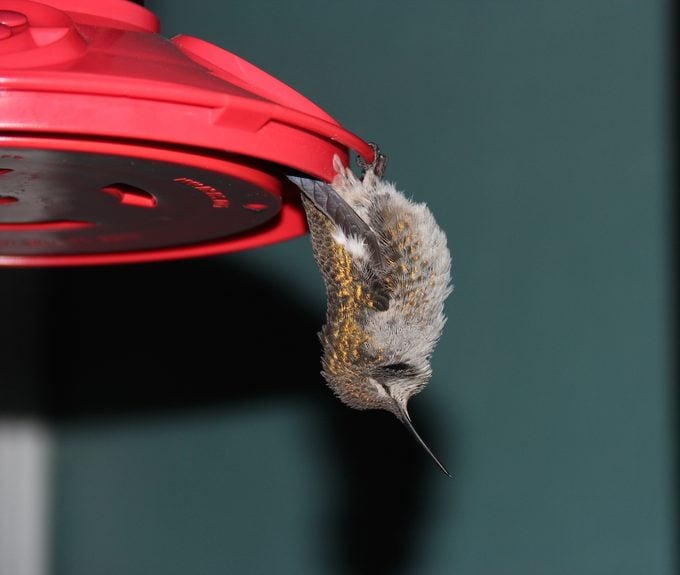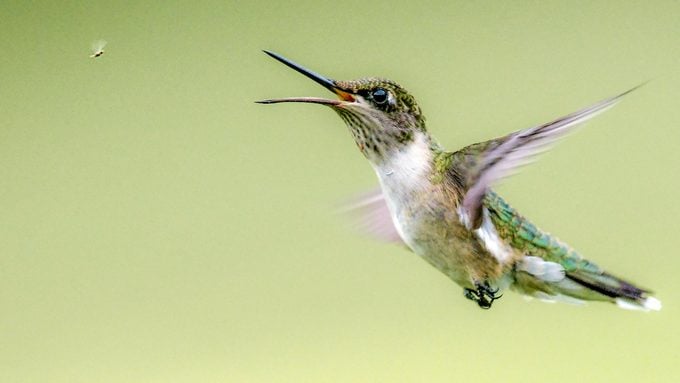The Hummingbird Heart Rate Is Unbelievably Fast
Updated: Jul. 11, 2024
Everyone knows how quickly hummingbirds fly — but do their hearts beat just as fast?

Hummingbirds are speedy little creatures. Ruby-throated hummingbirds flap their wings at a blurry (and tough to photograph!) rate of 50 times per second, and they can achieve a velocity of 90 feet per second in flight. But if everything else about them is so quick, you might ponder… how fast is a typical hummingbird heart rate?
On This Page
How Fast Does a Hummingbird’s Heart Beat?

To find an answer and even more interesting info about these little birds’ hearts, we turn to The Hummingbird Handbook.
“Hummingbirds have the largest hearts relative to body size in the entire animal kingdom. Their hearts account for as much as 2.5 percent of their body weight,” author John Shewey writes. “To put that figure in perspective, the human heart accounts for only 0.3 percent of total body mass. And the hummingbird’s heart beats at astounding rates, typically 500 to 1,200 beats per minute, depending on level of activity.” Humans, by comparison, have a resting heart rate around 72 beats per minute.
When ruby-throats are really exerting themselves in flight, their hearts race at top speed. In calmer situations, that rate drops. That’s why, although you might not guess from the activity at your feeders, hummingbirds spend most of their waking hours perching or resting.
Learn more fascinating facts about hummingbirds, including what they eat, and how many types of hummingbirds live in the United States.
How Torpor Affects Hummingbird Heart Rate

Torpor changes the numbers around, too. A Costa’s hummingbird’s heart beats between 500 and 900 times each minute when at rest. When in a torpid state, its heart rate might drop all the way down to 50 beats per minute. It will also slow its metabolism by up to 95%.
To conserve energy on cold nights, broad-tailed hummingbirds might enter torpor to stay at an even 54 degrees.
Hummingbird Metabolism

As you might guess, with a high heart rate comes a high energy burn rate. The Journey North research team at the University of Wisconsin-Madison reports that ruby-throated hummingbirds have the fastest metabolisms not only in the bird world, but also in the whole of the animal kingdom. They can eat up to 3 times their weight in nectar every day.
According to the San Diego Zoo, hummingbirds require around 3 to 8 calories per day. This doesn’t seem like much at first. But translating that into human terms, it’d mean consuming 155,000 calories a day. Because they eat so much, hummingbirds also have to digest quickly. They can move a spider through their system in less than 15 minutes—70 times faster than our digestion.
To look at it a different way, we would have to eat over 300 quarter-pound cheeseburgers per day to keep up with the eating habits of hummingbirds, if our bodies worked as rapidly as theirs.
About the Expert
Oreg0n-based author and nature photographer John Shewey wrote The Hummingbird Handbook: Everything You Need to Know About These Fascinating Birds, published by Timber Press.





















